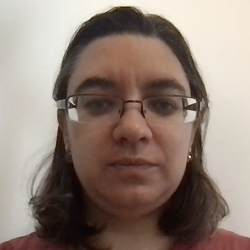| bulkAnalyseR: an accessible, interactive pipeline for analysing and sharing bulk multi-modal sequencing data
I Moutsopoulos, EC Williams, II Mohorianu
Briefings in Bioinformatics 24 (1), bbac591
|
|
2023 |
| Myeloid cell interferon secretion restricts Zika flavivirus infection of developing and malignant human neural progenitor cells
H Bulstrode, GC Girdler, T Gracia, A Aivazidis, I Moutsopoulos, ...
Neuron 110 (23), 3936-3951. e10
|
|
2022 |
| The Sum of Two Halves May Be Different from the Whole—Effects of Splitting Sequencing Samples Across Lanes
EC Williams, R Chazarra-Gil, A Shahsavari, I Mohorianu
Genes 13 (12), 2265
|
|
2022 |
| Viral transduction of primary human lymphoma B cells reveals mechanisms of NOTCH-mediated immune escape
M Mangolini, A Maiques-Diaz, S Charalampopoulou, ...
Nature Communications 13 (1), 6220
|
|
2022 |
| HEPATOBLASTS COMMITMENT THROUGHOUT HUMAN EMBRYONIC LIVER DEVELOPMENT
C Morell, ED Zacharis, C Gribben, A Shahsavari, X He, K Kania, ...
HEPATOLOGY 76, S1257-S1257
|
|
2022 |
| Host Respiratory Transcriptome Signature Associated with Poor Outcome in Children with Influenza–Staphylococcus aureus Pneumonia
C Britto, I Mohorianu, T Yeung, E Cheung, T Novak, MW Hall, PM Mourani, ...
The Journal of infectious diseases 226 (7), 1286-1294
|
|
2022 |
| Chronic injury induces plasticity between cholangiocytes and hepatocytes in the human liver
V Galanakis, C Gribben, A Calderwood, I Moutsopoulos, K Kania, ...
Journal of Hepatology 77, S742
|
|
2022 |
| Mapping the biogenesis of forward programmed megakaryocytes from induced pluripotent stem cells
M Lawrence, A Shahsavari, S Bornelöv, T Moreau, R McDonald, ...
Science Advances 8 (7), eabj8618
|
|
2022 |
| ClustAssess: tools for assessing the robustness of single-cell clustering
A Shahsavari, A Munteanu, I Mohorianu
bioRxiv, 2022.01. 31.478592
|
|
2022 |
| RBPMS promotes contractile smooth muscle splicing and alters phenotypic behaviour of human embryonic stem cell derived vascular smooth muscle cells.
AGG Jacob, I Moutsopoulos, A Petchey, I Mohorianu, S Sinha, C Smith
bioRxiv, 2022.11. 27.516868
|
|
2022 |
| bulkAnalyseR: An accessible, interactive pipeline for analysing and sharing bulk sequencing results
I Moutsopoulos, EC Williams, II Mohorianu
bioRxiv, 2021.12. 23.473982
|
|
2021 |
| THE USE OF THE TRANSCRIPTOMIC SIGNATURE OF MESENCHYMAL STROMAL CELLS FROM VARIOUS SOURCES TO HELP DECIDE THE OPTIMAL SOURCE FOR CARTILAGE REGENERATION
I Darlington, A Vogt, EC Williams, R Brooks, M Birch, I Mohorianu, W Khan, ...
Orthopaedic Proceedings 103 (SUPP_16), 14-14
|
|
2021 |
| noisyR: enhancing biological signal in sequencing datasets by characterizing random technical noise
I Moutsopoulos, L Maischak, E Lauzikaite, SA Vasquez Urbina, ...
Nucleic Acids Research 49 (14), e83-e83
|
|
2021 |
| ZAP-70 constitutively regulates gene expression and protein synthesis in chronic lymphocytic leukemia
J Chen, V Sathiaseelan, A Moore, S Tan, CSR Chilamakuri, ...
blood 137 (26), 3629-3640
|
|
2021 |
| NOTCH1 drives immune-escape mechanisms in B cell malignancies
M Mangolini, A Maiques-Diaz, S Charalampopoulou, ...
bioRxiv, 2021.04. 10.439192
|
|
2021 |
| Integrative single-cell RNA-seq and ATAC-seq analysis of human developmental hematopoiesis
AM Ranzoni, A Tangherloni, I Berest, SG Riva, B Myers, PM Strzelecka, ...
Cell stem cell 28 (3), 472-487. e7
|
|
2021 |
| Defining the transcriptional signature of esophageal-to-skin lineage conversion
MT Bejar, P Jimenez-Gomez, I Moutsopoulos, B Colom, S Han, ...
bioRxiv, 2021.02. 19.431899
|
|
2021 |
| Gene expression during larval caste determination and differentiation in intermediately eusocial bumblebees, and a comparative analysis with advanced eusocial honeybees
DH Collins, A Wirén, M Labédan, M Smith, DC Prince, I Mohorianu, ...
Molecular Ecology 30 (3), 718-735
|
|
2021 |
| noisyR: Enhancing biological signal in sequencing datasets by characterising random technical noise
I Moutsopoulos, L Maischak, E Lauzikaite, SAV Urbina, EC Williams, ...
bioRxiv, 2021.01. 17.427026
|
|
2021 |
| feamiR: Feature selection based on Genetic Algorithms for predicting miRNA-mRNA interactions
EC Williams, A Calinescu, I Mohorianu
bioRxiv, 2020.12. 23.424130
|
|
2020 |

